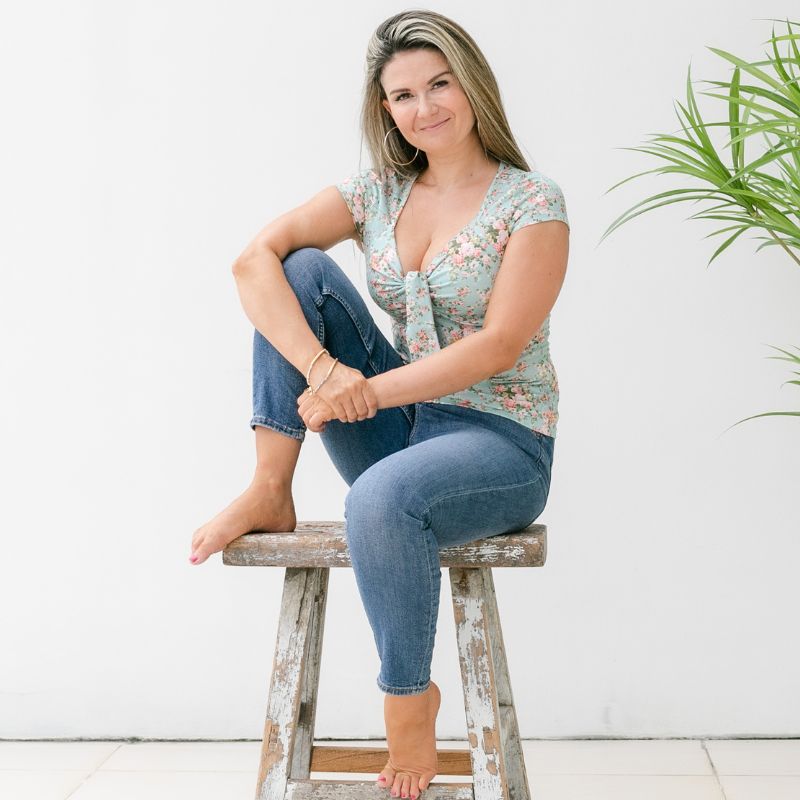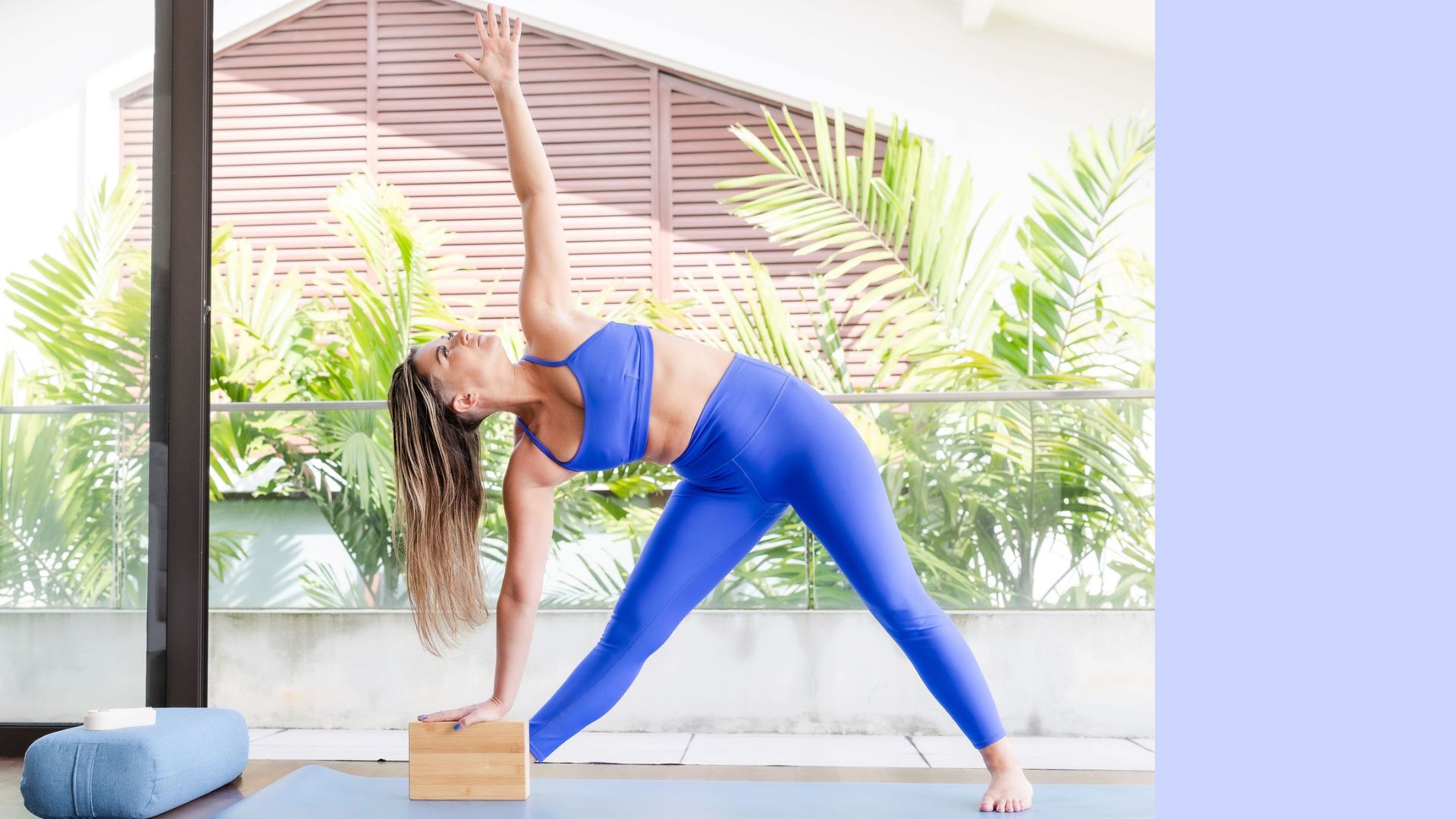Yoga helped to transform my experience of menopause - here's how it happened
Doing yoga in menopause can help to alleviate symptoms and create a better mindset during this life stage, as instructor Cheryl MacDonald discovered after 25 years in the industry


With so much awareness of how exercise can help our health and wellbeing, both physical and mental, you'd think that we'd know all about the benefits of yoga in menopause. But evidence suggests not and with 47 million women set to experience menopause in the next year alone, it could be a valuable practice to have.
For some, the idea of hitting menopause can be an uncomfortable one. With the hot flashes, mood swings, lack of sleep, unwanted weight gain, and differing symptoms from one person to the next, it can be difficult sometimes to know what can help. But exercise, and yoga in particular, has been proven to be hugely beneficial in helping women gain back control of their lives as they age.
It's something that Cheryl MacDonald, now 44, says changed her whole experience of menopause after symptoms started at 40. "My periods started becoming irregular and I started experiencing symptoms of perimenopause and thought, ‘right, this is happening,’” she says.
MacDonald had been teaching yoga for 15 years by this point and suddenly found herself experiencing menopause symptoms at the same time as many of her clients. "They were asking me for guidance, so I decided I needed to do something," she says. “I undertook specialist training, did a lot of reading and started trying different things. I started thinking about how I could tailor hormonal balance, [something I was already familiar with from doing yoga in pregnancy] to the specific challenges of menopause and perimenopause."
Glasgow-born Cheryl, who now lives in Singapore with her husband and son, started exploring the ways yoga and menopause can work together. "I started to realise that even though my body was changing, I could use yoga practises to create a positive ageing mindset," she says. "When you’re over 40, your body wants something different. It’s about listening to it and accepting that it’s not how it was in your 20s and 30s. Your hormones are all over the place now and you need to let it take charge."
So, yoga and menopause - what are the benefits of yoga during this life stage and what are the core moves to incorporate in your workout routine? Cheryl MacDonald, a certified yoga instructor and founder of YogaBellies, reveals all you need to know.
Why does yoga in menopause work?
Yoga in menopause works for a very simple reason. Many yoga poses pressurise and depressurise specific glands around the body which creates subtle compressions and decompressions that can regulate secretions of hormones. Cheryl used this idea to start introducing poses into her practice, focusing on those that would activate different glands to help balance fluctuating hormones during perimenopause.
Sign up to our free daily email for the latest royal and entertainment news, interesting opinion, expert advice on styling and beauty trends, and no-nonsense guides to the health and wellness questions you want answered.
“I have a very random menstrual cycle now due to perimenopause, as do all women going through it,” Cheryl explains. “With yoga, we can actually tune in with the energy we’re dealing with. My pre-menstrual syndrome (PMS), for example, can be alleviated through yoga as certain poses can help to lower cortisol levels. Cobra Pose, for instance, helps to stimulate the adrenal glands. This helps to balance those hormones and Camel Pose opens the heart and chest to improve mood.”
Needless to say, when we do any kind of exercise that raises our heart level even slightly, the body also produces another type of hormone: endorphins. These hormones, research from New York University explains, help to boost our mood, decrease stress, and improve our mental wellbeing.

Cheryl MacDonald has 25 years of experience in the world of yoga, guiding over 100,000 women in the UK so far, helping them find balance and navigate menopause symptoms.
Cheryl is also the founder of YogaBellies, a range of classes, retreats, and teacher training courses for women at any life stage. She has recently issued a book for women experiencing menopause called YogaPause - What Women Need To Know After 40 and Why Yoga Is The Answer. It is available on Amazon.
Benefits of yoga in menopause
1. Yoga can help to alleviate some menopause symptoms
Many of the symptoms women experience during menopause can be helped by doing yoga as a workout, and Cheryl urges those going through it to track their symptoms to find out how the exercise can work best for them.
"I always track my symptoms and I've introduced lots of new postures to help alleviate them,” she said. “Insomnia, for example. I meditate or do my yoga practice before bed, otherwise, I can’t sleep. I've also incorporated different postures to help with joint pain, such as Cat-Cow which warms up the spine and increases flexibility, and Downward Facing Dog which stretches and strengthens the entire body."
When it comes to hot flushes, she says, Sitali Pranayama (cooling breath) is best. "It’s breathing cool air in through the mouth which helps bring the body temperature down, plus it’s very relaxing."
2. Yoga encourages you to check in with yourself
Doing yoga in menopause and perimenopause is also all about timing - when to exercise and when to not, Cheryl says. "If I’m menstruating, I know I need to take my practice down a notch and do more restorative and resting because I need that recovery time. By doing that, I feel my best when I’m going through ovulation and I have lots of energy."
Equally, if you're experiencing joint pain during menopause, it might be a sign to lighten up your practice for the day. On the days when the symptoms aren't so intense, you can focus on more intensive yoga.
"Yoga is looking at your full life approach both on and off the mat," she says, rather than doing yoga every day.

Cheryl MacDonald has been practicing yoga for 25 years.
3. Yoga during menopause can improve your health in the future
When we talk about exercise during menopause, the first point of discussion is all about strength training - and for good reason. While doing any exercise is better than none, strength training makes all the difference later in life.
"I also realised that yoga has to be very focused on weight-bearing exercise as you get older because, after menopause, women are at higher risk of osteoporosis and osteopenia,” Cheryl says. "That loss of bone density can be transformed just with small weights."
For example, you could use ankle weights during your floor workouts to put much-needed pressure on your muscles, bones, and joints.
4. Anyone can do yoga during menopause
Adding these tweaks into her practice has helped Cheryl and her clients. But for those new to the practice and looking to try yoga for beginners, it can be a worrying prospect to start something new. To that, Cheryl says to think again.
"For anyone who has never done yoga before, the great thing is you can start at any stage of your life and at any stage of fitness. You can do it at home, you can find videos on YouTube or online. Just make sure you have a teacher who is qualified in yoga for menopause. It’s such a major stage of a woman’s life so you need someone who knows what we’re going through and will make sure we’re doing realistic stuff. That’s very important," she says.
Approaching menopause in this way, she says, has totally changed her outlook on the next stage of life. "I’m not worried now looking to the future. I just think about when I do hit menopause, my periods will have stopped and I'll be free from the biological monthly tyranny of periods forever. You can get your life back, your sex drive comes back. It’s all stuff to look forward to," she says.
“I love working with women going through this time of their life and seeing that actually this isn’t the end, that instead this is an opportunity. Life really does begin at 40."
How to modify your yoga after 40
- Gentle moves: "If you are focussing on managing symptoms, it helps to choose gentle yoga practices that are low impact and don’t put too much strain on your body. For example, seated postures like Child’s Pose, Forward Folds and Cobra Pose are great options," says Cheryl.
- Avoid inversions: "During perimenopause, it is common to experience fluctuations in blood pressure, which can make us feel lightheaded or dizzy. To avoid any potential issues, I think it’s best to avoid inversions like Headstands and Shoulder Stand. Instead, opt for postures that keep your head below your heart like Downward Facing Dog and Cat-Cow."
- All about breathing: "Stress levels can be high because of those wild hormonal fluctuations," she says. "Practising deep, slow breathing can help to calm your mind and reduce stress. In your yoga practice, take time to focus on your breath and make sure you’re breathing deeply and fully. Always try to join the breath with the moment, which is one of the ways that yoga becomes a moving meditation and not just another gym class."
- Add restorative postures: "Restorative yoga postures are designed to help you relax and rejuvenate your body. As we get older, it’s important to prioritise self-care and rest. Try incorporating postures like Supported Child’s Pose, Reclining Bound Angle Pose and Legs Up the Wall to help you feel refreshed and relaxed." If you're looking for a particular routine to follow, take a look at woman&home's tried and tested roundup of the best yoga apps.
- Use props: "You may start to experience physical limitations that make certain yoga postures more challenging than they were before, or you may want to slow the pace of your practice down. Props like blocks, heat packs, straps and weighted blankets can be incredibly helpful. They can provide support and make postures more accessible, allowing you to keep getting the most out of your practice."

Jennifer Kyte is an experienced editor and writer specialising in women's lifestyle and celebrity interviews. She has worked for national publications both in the UK and Australia for the last 15 years covering everything and anything from royal, celebrity, health, and real life to major news events.